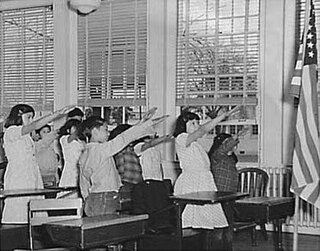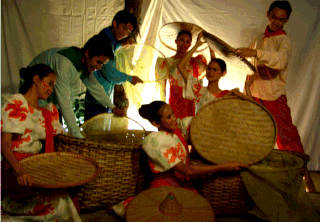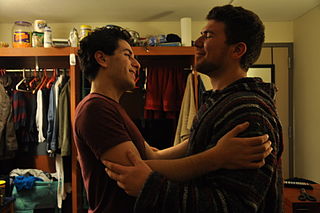 W
WAdab, from the Arabic word Aadaab (آداب), meaning respect and politeness, is a hand gesture used in the Indian subcontinent, by the Urdu-speaking and Bengali-speaking Muslim population while greeting, as well as many non-Muslims in north India. It is associated with the Ganga-Jamuni culture of South Asia, especially of the Urdu-speaking communities of Uttar Pradesh, Hyderabadi Muslims, and Muhajir people of Pakistan as well as the Bengali Muslims of Bangladesh. It (Adab) is widely used in the rural (villages) area of Bangladesh, in order to alternate Salam to Non-Muslims, especially Hindus.
 W
WAñjali Mudrā, is a hand gesture mainly associated with Indian religions and arts, encountered throughout Asia and beyond. It is a part of Indian classical dance postures such as Bharatanatyam, yoga practice, and forms part of the greeting Namaste. Among the performance arts, Anjali Mudra is a form of non-verbal, visual communication to the audience. It is one of 24 samyukta mudras of the Indian classical arts. There are several forms of the Anjali Mudra such as the brahmanjali.
 W
WThe anointings of Jesus’s head or feet are events recorded in the four gospels. The account in Matthew 26, Mark 14, and John 12 takes place on the Holy Wednesday of Holy Week at the house of Simon the Leper in Bethany, a village in Judaea on the southeastern slope of the Mount of Olives, and he is anointed by Mary of Bethany, the sister of Martha and Lazarus. The event in Luke features an unknown sinful woman, and is in the northern region, as Luke 7 indicates Jesus was ministering in the northern regions of Nain and Capernaum. The honorific anointing with perfume is an action frequently mentioned in other literature from the time; however, using long hair to dry Jesus's feet, as in John and Luke, is not recorded elsewhere, and should be regarded as an exceptional gesture. Considerable debate has discussed the identity of the woman, the location, timing, and the message.
 W
WApplause is primarily a form of ovation or praise expressed by the act of clapping, or striking the palms of the hands together, in order to create noise. Audiences usually applaud after a performance, such as a musical concert, speech, or play, as a sign of enjoyment and approval.
 W
WThe position of at attention, or standing at attention, is a military posture which involves the following general postures:Standing upright with an assertive and correct posture: famously "chin up, chest out, shoulders back, stomach in". Arms fixed at the side, thumb or middle finger parallel to trouser or skirt seam, depending on military drill specifics. "Eyes front": head and eyes locked in a fixed forward posture. Ideally eyes unmoving fixated on a distant object. Blank facial expression. Keeping the heels together, with the toes apart with the feet at a 45 degree angle. No speech, facial or bodily movements except when as required by military drill.
 W
WThe Bellamy salute is a palm-out salute described by Francis Bellamy, the author of the American Pledge of Allegiance, as the gesture which was to accompany the pledge. During the period when it was used with the Pledge of Allegiance, it was sometimes known as the "flag salute". Both the Pledge and its salute originated in 1892. Later, during the 1920s and 1930s, Italian fascists and Nazi Germans adopted a salute which was very similar, erroneously attributed to the Roman salute, a gesture that was popularly believed to have been used in ancient Rome. This resulted in controversy over the use of the Bellamy salute in the United States. It was officially replaced by the hand-over-heart salute when Congress amended the Flag Code on December 22, 1942.
 W
WBowing in Japan is the act of lowering one's head or the upper part of the torso, commonly used as a sign of salutation, reverence, apology or gratitude in social or religious situations.
 W
WThe different kinds of bows one could encounter at an Eastern Orthodox service are shown in the drawing below.
 W
WA claque is an organized body of professional applauders in French theatres and opera houses. Members of a claque are called claqueurs.
 W
WA curtsy is a traditional gendered gesture of greeting, in which a girl or woman bends her knees while bowing her head. It is the female equivalent of male bowing or genuflecting in Western cultures. Miss Manners characterizes its knee bend as deriving from a "traditional gesture of an inferior to a superior." The word "curtsy" is a phonological change from "courtesy" known in linguistics as syncope.
 W
WDogeza (土下座) is an element of traditional Japanese etiquette which involves kneeling directly on the ground and bowing to prostrate oneself while touching one's head to the floor. It is used to show deference to a person of higher status, as a deep apology or to express the desire for a favor from said person.
 W
WGenuflection or genuflexion is the act of bending a knee to the ground, as distinguished from kneeling which more strictly involves both knees. From early times, it has been a gesture of deep respect for a superior. Today, the gesture is common in the Christian religious practices of the Anglican Church, Lutheran Church, Roman Catholic Church, and Western Rite Orthodox Church. The Latin word genuflectio, from which the English word is derived, originally meant kneeling with both knees rather than the rapid dropping to one knee and immediately rising that became customary in Western Europe in the Middle Ages. It is often referred to as "going down on one knee" or "bowing the knee". In Western culture, one genuflects on the left knee to a human dignitary, whether ecclesiastical or civil, while, in Christian churches and chapels, one genuflects on the right knee when the Sacrament is not exposed but in a tabernacle or veiled.
 W
WHand-kissing is a greeting gesture that indicates courtesy, politeness, respect, admiration or even devotion by one person toward another. A hand-kiss was considered a respectful way for a gentleman to greet a lady. Today, non-ritual hand-kissing is rare and takes place mostly within conservative upper class or diplomatic contexts. Today, the hand kiss has largely been replaced by a kiss on the cheek or a handshake.
 W
WA hat tip is an act of tipping or doffing one's hat as a cultural expression of recognition, respect, gratitude or simple salutation and acknowledgement between two persons.
 W
WKneeling is a basic human position where one or both knees touch the ground. Kneeling is defined as “to position the body so that one or both knees rest on the floor,” according to Merriam-Webster. Kneeling when only composed of one knee, and not both, is called genuflection.
 W
WKowtow, which is borrowed from kau tau in Cantonese Chinese, is the act of deep respect shown by prostration, that is, kneeling and bowing so low as to have one's head touching the ground. In Sinospheric culture, the kowtow is the highest sign of reverence. It was widely used to show reverence for one's elders, superiors, and especially the Emperor, as well as for religious and cultural objects of worship. In modern times, usage of the kowtow has been reduced.
 W
WMano or pagmamano is an "honoring-gesture" used in Filipino culture performed as a sign of respect to elders and
 W
WMaundy, or the Washing of the Feet, or Pedelavium, is a religious rite observed by various Christian denominations. The Latin word mandatum is the first word sung at the ceremony of the washing of the feet, "Mandatum novum do vobis ut diligatis invicem sicut dilexi vos", from the text of John 13:34 in the Vulgate. This is also seen as referring to the commandment of Christ that believers should emulate his loving humility in the washing of the feet. The term mandatum, therefore, was applied to the rite of foot-washing on the Thursday preceding Easter Sunday, called Maundy Thursday.
 W
WNamaste, sometimes spoken as namaskar and namaskaram, is a Hindu customary, non-contact form of respectfully greeting and honoring the opposite person or group, used at any time of day. Today, it is found on the Nepal and Indian subcontinent, Southeast Asia and among the Indian diaspora worldwide. The gesture is widely used as a greeting in the parts of Southeast Asia where Indian religions are strong. Namaste is usually spoken with a slight bow and hands pressed together, palms touching and fingers pointing upwards, thumbs close to the chest. This gesture is called añjali mudrā; the standing posture incorporating it is pranamasana.
 W
WThe Nazi salute, Hitler salute, or Sieg Heil salute, is a gesture that was used as a greeting in Nazi Germany. The salute is performed by extending the right arm from the neck into the air with a straightened hand. Usually, the person offering the salute would say "Heil Hitler!", "Heil, mein Führer!", or "Sieg Heil!". It was adopted in the 1930s by the Nazi Party to signal obedience to the party's leader, Adolf Hitler, and to glorify the German nation. The salute was mandatory for civilians but mostly optional for military personnel, who retained the traditional military salute until the failed assassination attempt on Hitler on 20 July 1944.
 W
WOrans (/ˈoː.rans/), a loanword from Medieval Latin ōrāns translated as one who is praying or pleading, also orant or orante, is a posture or bodily attitude of prayer, usually standing, with the elbows close to the sides of the body and with the hands outstretched sideways, palms up. It was common in early Christianity and can frequently be seen in early Christian art. In modern times, the orans position is still preserved within parts of the Catholic, Orthodox, Anglican and Lutheran liturgies, Pentecostal and charismatic worship, and the ascetical practices of some religious groups.
 W
WPraṇāma is a form of respectful or reverential salutation before something, or another person – usually grandparents, parents, elders, husband/wife, or teachers or someone deeply respected such as a deity, found in Indian culture and Hindu traditions.
 W
WProskynesis or proscynesis, or proskinesis is a solemn gesture of respect for the gods and people; among the Persians, it referred to a man prostrating himself and kissing the earth, or the limbs of a respected person. Proskynesis (adoratio) was one of the religious rites of the Greeks and Romans.
 W
WProstration is the placement of the body in a reverentially or submissively prone position as a gesture. Typically prostration is distinguished from the lesser acts of bowing or kneeling by involving a part of the body above the knee touching the ground, especially the hands.
 W
WThe Roman salute or fascist salute is a gesture in which the arm is fully extended, facing forward, with palm down and fingers touching. In some versions, the arm is raised upward at an angle; in others, it is held out parallel to the ground. In contemporary times, the former is widely considered a symbol of fascism based on a custom popularly attributed to ancient Rome. However, no Roman text gives this description, and the Roman works of art that display salutational gestures bear little resemblance to the modern Roman salute.
 W
WRukūʿ can refer to either of two things in Islam:The act of belt-low bowing in standardized prayers, where the backbone should be in rest, before straightening up to go for sujud. A paragraph of the Quran.
 W
WA salute is a gesture or other action used to display respect. When saluting a person, as distinct from a flag or a national anthem or other symbolic melody, the gaze must be towards that person, also when returning a salute. Thus, the respectable salute includes a greeting. Not looking at the person, as with most gestured greetings, is likely to be interpreted as disrespectful or an eye deficiency. Salutes are primarily associated with armed forces and law enforcement, but other organizations, such as girl guides, scouts and other civilians also use salutes.
 W
WSampeah is a Cambodian greeting or a way of showing respect. It is very similar to the Thai wai. Both Sampeah and Thai wai are based on the Indian Añjali Mudrā used in namasté. Pranāma or Namaste, the part of ancient Indian culture has propagated to southeast Asia, which was part of indosphere of greater India, through the spread of Hinduism and Buddhism from India.
 W
WThe Schwurhand is a heraldic charge depicting the hand gesture that is used in Germanic Europe and neighboring countries, when swearing an oath in court, in office or in swearing-in. The right hand is raised, with the index finger and middle finger extended upwards; the last two digits are curled downwards against the palm. The thumb is shown slightly curled or raised.
 W
WThe three-finger salute is used by members of Scout and Guide organizations around the world when greeting other Scouts and in respect of a national flag at ceremonies. In most situations, the salute is made with the right hand, palm face out, the thumb holding down the little finger, and with the fingertips on the brow of the head. There are some variations of the salute between national Scouting organizations and also within some programme sections.
 W
WSembah is an insular Southeast Asian greeting and gesture as a way of demonstrating respect and reverence. While performing the sembah, the person clasped their palms together solemnly in a prayer-like fashion called suhun or susuhun in Javanese; or menyusun jari sepuluh in Malay, and placed them in front of the chest, and moving the combined palms up to the chin, or all the way up until the thumbs touching the tip of the nose, while bowing slightly. Any of these two forms are made depending on the status of the person greeted.
 W
WMaking the sign of the cross, or blessing oneself or crossing oneself, is a ritual blessing made by members of some branches of Christianity. This blessing is made by the tracing of an upright cross or + across the body with the right hand, often accompanied by spoken or mental recitation of the Trinitarian formula: "In the name of the Father, and of the Son, and of the Holy Spirit. Amen."
 W
WSujūd, or sajdah, is the act of low bowing or prostration to Allah in Islam facing the qiblah. It is usually done in standardized prayers (salah). The position involves kneeling and bowing till one touches the ground with the forehead, nose, palms, knees and toes, and remaining in that position until one attains a relaxed state while glorifying ALLAH thrice or more in odd number of times.
 W
WSun Salutation or Salute to the Sun, is a practice in yoga as exercise incorporating a flow sequence of some twelve gracefully linked asanas. The asana sequence was first recorded as yoga in the early 20th century, though similar exercises were in use in India before that, for example among wrestlers. The basic sequence involves moving from a standing position into Downward and Upward Dog poses and then back to the standing position, but many variations are possible. The set of 12 asanas is dedicated to the Hindu solar deity Surya. In some Indian traditions, the positions are each associated with a different mantra.
 W
WThe Thai greeting referred to as the wai consists of a slight bow, with the palms pressed together in a prayer-like fashion. It has its origin in the Indian Añjali Mudrā, like the Indian namaste and Burmese mingalaba. The higher the hands are held in relation to the face and the lower the bow, the more respect or reverence the giver of the wai is showing. The wai is traditionally observed upon formally entering a house. After the visit is over, the visitor asks for permission to leave and repeats the salutation made upon entering. The wai is also common as a way to express gratitude or to apologise.
 W
WThe wai khru ceremony is a Thai ritual in which students pay respects to teachers in order to express their gratitude and formalize the student–teacher relationship. It is regularly held near the beginning of the school year in most schools in Thailand. Wai khru has long been an important rite in the traditional martial and performing arts, as well as in astrology, Thai Massage and other traditional arts; students and performers of Muay Thai and Krabi Krabong, as well as Thai dance and classical music, will usually perform a wai khru ritual at their initiation as well as before performances to pay respect and homage to both their teachers and the deities who patronize their arts.
 W
WThe Zogist salute, or the nationalist Albanian salute, is a military salute of Albania since used by civilians in other countries. The salute is a gesture whereby the right hand is placed over the heart, with the palm facing downwards.
 W
WZolgokh is a traditional Mongolian formal greeting. Two people hold both their arms out, and the younger person's arms are placed under the elder person's and grasps their elbows to show support for their elder. The two people then touch each other's cheeks, usually accompanied with the phrase Amar mend üü, meaning "Are you well and peaceful?".